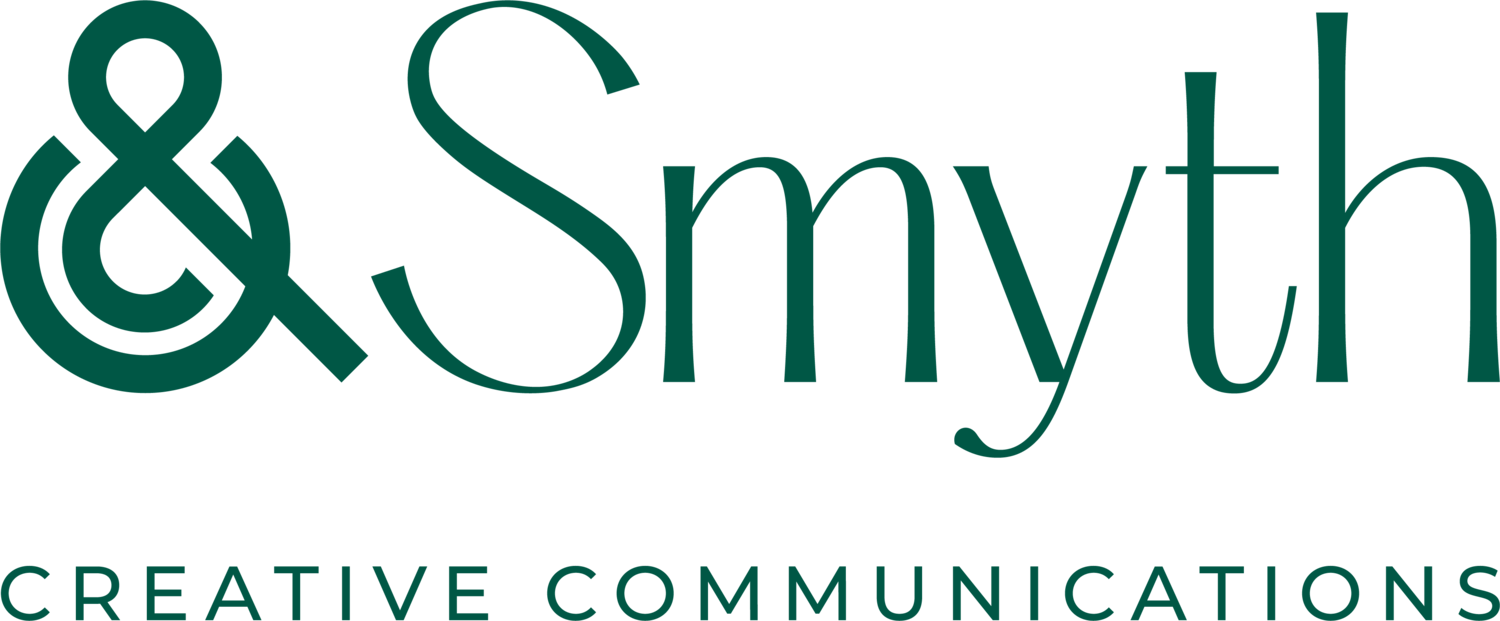Can a small business make any real impact when it comes to the climate emergency?
By Gemma Smyth, Managing Director, &Smyth Creative Communications
When our business developed a new brand in 2021, we spent months looking inward, analysing what we wanted the business to stand for and what our vision for the future was. One thing we all agreed on was that we wanted to make sure our work meant something and that our actions were making a positive impact on society, local communities and the natural environment.
We put sustainability on our weekly agenda to educate ourselves and assess how we could measure and improve our carbon footprint. However, quite quickly we became totally overwhelmed and disillusioned with the volume of information and the lack of resources outlining clear steps we could take to make a difference.
In order to help those suffering from information overload, in this article I outline some actionable steps our business has taken, along with the measures we are currently exploring, and those we continue to struggle with in order to help any small business taking the first steps.
What have we done?
We have since spent quite a lot of time reading, reviewing, gathering and collating resources in order to cut through the climate clutter with actionable insights and resources.
Climate Hub. We have compiled all of the resources we have found, along with some of our own thoughts into a new ‘Climate Hub’ which can be accessed on our website in the hope that it might help someone else starting out on their journey.
Sustainability Lens. We have managed to bring sustainability into the everyday discourse in our agency. With every new project, we ask, what are the climate implications of this story or activity?
Quarterly Sustainability Sessions. In order to ensure we are also considering the broader picture, we hold quarterly strategy sessions focussed solely on sustainability. At these we discuss any additional measures we as a business can take, any issues which should be raised with clients and we review the progress of activities currently underway or blocked (see more below).
Purpose Disruptors Ireland. We have joined Purpose Disruptors Ireland and regularly attend events and discussions aimed at reducing the environmental impact of the advertising and communications industry in Ireland. We have already benefited from a number of their initiatives including industry research, attending a number of thought-provoking events and sharing relevant information and ideas.
Challenge Clients. We regularly challenge and encourage our clients to ensure that they are engaging in client-conscious activities and initiatives. When there is an absence of trust, communication breaks down. We must make sure that any environmental claims made by the businesses we work with are backed up by science and independently audited and verified.
New Project Brief. In our new ‘Project Brief’ form, we ask clients to explore the environmental impact of the suggested activity, and for new clients we ask them to supply information on their environmental commitments so that we can decide on the suitability of the business as a new client.
Low Carbon Tactics. We carefully consider all materials procured on behalf of clients including packaging for product drops and props for photography and events to make sure that they are the least damaging to the environment.
Ways Of Working. We operate from two shared office spaces in Sligo and Dublin, therefore sharing the energy usage with multiple organisations. We opt for refurbished equipment when purchasing new technology for the business, we have almost completely abolished the use of printed materials and we have banned single-use plastics.
Travel. We encourage the use of public transport where possible and reduce the amount of travel required by encouraging online meetings where possible.
What are we doing?
Right now, we have three items on our agenda which we are proactively working on and will be points for discussion at our next quarterly sustainability session.
Website carbon. We are in the process of carrying out a carbon assessment on our website in order to identify ways in which we can improve its performance.
Digital Footprint. We are also reviewing the carbon emissions created by our file-sharing systems and emails and looking for ways to make reductions.
BCorp Status. We are exploring if our agency could fulfill the criteria to become a certified B Corporation. This certification would measure the entire social and environmental impact of our business. A number of PR agencies in the UK have already received this certification, and while we hear can take over a year to complete, and a significant amount of time, we certainly think the final outcome would be worth it. Watch this space!
Where are we blocked?
While we are making some headway, there are also areas in which we feel completely blocked.
This includes how we can adequately measure the carbon emissions of our agency to allow us to have quantifiable metrics to measure against, and alongside this, how we can quantify our scope three emissions in terms of our client's activity.
While there are many tools that exist, none seem to take into account how to measure for a business of our size, operating the way we do in a hybrid environment. And this is a source of major frustration as it is so difficult to ascertain if our actions are having any impact.
Eyes open
On those days when we feel like we are sailing into the wind, we remind ourselves of a quote by Ray Charles who said, “Just because you can’t see anything, doesn’t mean you should shut your eyes.”
So, we are keeping our eyes open, heartened by the recent Intergovernmental Panel on Climate Change (IPCC) report which showed that a collective effort to make small changes across society could save 5% of global emissions.
This provides some reassurance that all of the small changes we are making, and continue to make across the business, are making some impact, even if we can’t see it.




